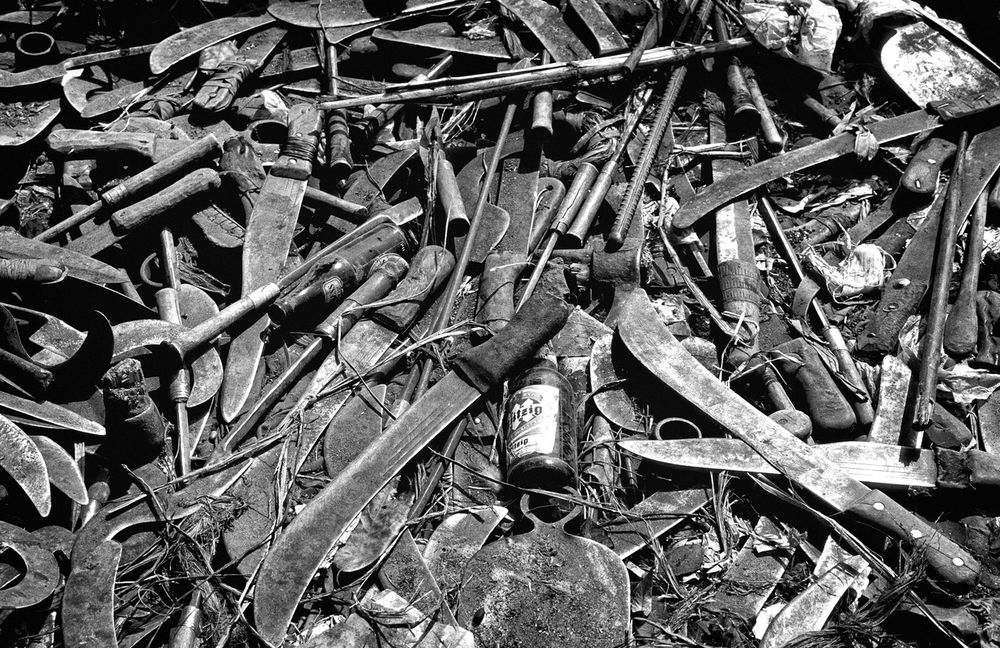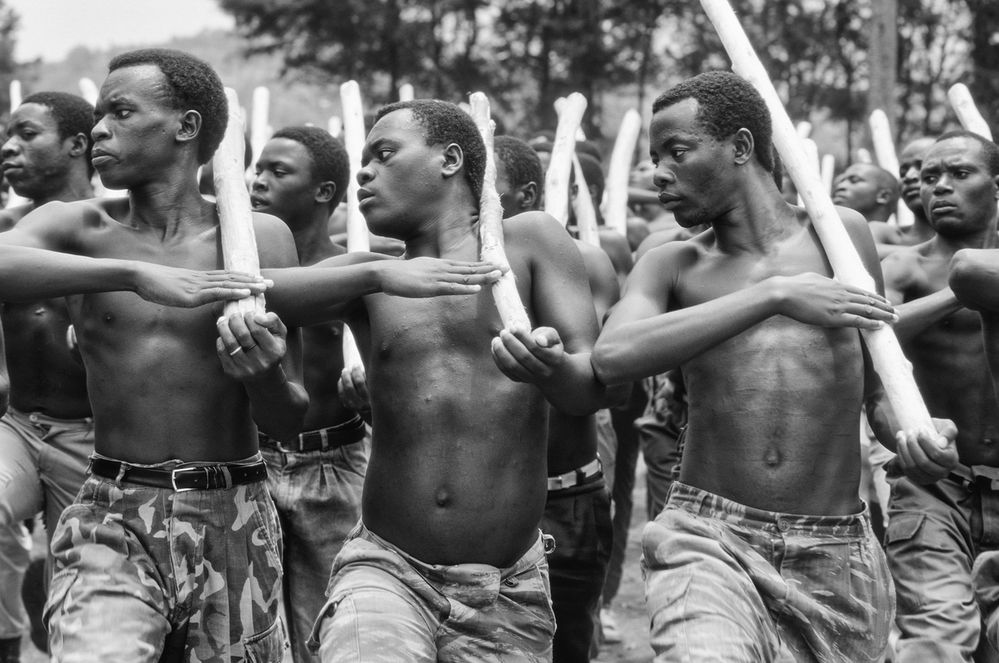Rwandan Genocide
7 April - 15 July 2024 | 30th anniversary
26 March 2024

Warning: this presentation contains graphic content
The Rwandan genocide occurred between 7 April and 15 July 1994 during the Rwandan Civil War. It is sometimes referred to as the genocide against the Tutsi, who were the minority ethnic group targeted by Hutu militias during the killings.
After decades of tension between the two groups, based on ethnicity and social caste, with political jostling and killing from both sides, the groundwork for genocide was laid in the early 1990s. The Hutu used newspapers and later the radio to disseminate racist and dehumanising propaganda that characterised all Tutsi as dangerous enemies that wanted to seize control of Rwanda. Hutu civilians were armed and trained for combat.
On April 6, 1994, the aeroplane carrying Rwandan President Juvénal Habyarimana and Cyprien Ntaryamira, the president of Burundi, was shot down, killing everyone on board, as it prepared to land in Kigali. The assassination of the Hutu presidents served as the catalyst for the genocide and the massacres began the following day.
It is estimated that more than 800,000 civilians were killed over 100 days. Most were Tutsi, along with moderate Hutu and Twa people.
Photojournalist Guenay Ulutuncok was in neighbouring Uganda when the Rwandan genocide took place. He travelled to Rwanda with a rental car and a pass from the Rwandan Patriotic Front (RPF) to document the aftermath. He described the cities and towns devoid of life, with evidence of the horrors all around. Infrastructure had collapsed and looting had been rife.

"A paradisiacal backdrop for unimaginable horrors. With green hills and beautiful views of mountains and valleys, the landscape is of breathtaking beauty.
In less than three months, the paradise turned into hell. More than 800,000 people died violently. Churches became morgues, previously peaceful villages became battlefields. The sweet odour of death pervaded the entire country.
Claudine was lucky. She is still alive. A group of Hutu had attacked her and her family, murdered her parents and five siblings and left her for dead. The machete blow that was supposed to cut off her head hit her face. The then four-year-old Tutsi child did not realise that she had become the victim of a war of extermination unleashed against her people. Claudine was rescued and ended up in an SOS emergency aid children's village. Eventually, a pensioner from Karlsruhe, Germany offered to pay for her operation. Claudine's face remains marked for life by the legacy of genocide, by a scar from the past." - Guenay Ulutuncok
"There was always discussion as to whether you can publish certain images..." - Guenay Ulutuncok
Ulutuncok took many photos during his time in Rwanda and made a selection for publication. There are photos that he will not approve for use due to their horrific nature. He says that at some point he stopped photographing such scenes, questioning their purpose. He considers the line between documenting the event whilst affording the victims dignity, and how it can be achieved.
See a selection from the series here.
The Tutsi military victory in Rwanda ended the genocide and prompted an estimated two million people, mostly Hutus, to flee Rwanda, fearing reprisals and revenge. Refugees fled mainly to Burundi, Tanzania, and Zaire (now the Democratic Republic of Congo), in one of the largest migrations of people in history. Around Goma alone, refugee camps held at least 850,000 people. Cholera and other diseases were rife, and it is estimated that over 50,000 people died.
A little over two years later, in 1996, the majority of refugees returned to Rwanda. There are an estimated 270,000 Rwandan refugees from the 1994 genocide that remain in African refugee host countries - Angola, Burundi, Cameroon, the Democratic Republic of the Congo (DRC), Kenya, Malawi, Congo, South Africa, Uganda, Zambia and Zimbabwe.
See a selection of Guenay Ulutuncok's images documenting the refugee camps and the return to Rwanda here.
Ulutuncok returned to Rwanda in 2003, where he documented the rebuilding of a country torn by decades of violence, and the The Nyamata Genocide Memorial - a former church, and site of the slaughter of 10,000 Tutsi people in 1994.
See the series here.
Guenay Ulutuncok, born 1954 in Istanbul, began his career as a photographer and layout designer at the Kölner Volksblatt. After studying architecture, he was one of the co-founders of the photography agency Laif in Cologne in 1981. His first reports took him to North Africa and the Middle East in the early 1980s, later on also to sub-Saharan Africa.
After the genocide in 1994, Ulutuncok closely monitored the entire development in Rwanda and Zaire (DRC) with extended stays until 1996. This included observing the returnees from Zaire, attending Gacaca courts, and witnessing prisoners at work in the Butare region, among other activities. In 2003, he returned to Rwanda to conduct further research for the final stories included in his book "Ten Years Since the Genocide – Rwanda", released in 2004. Also in 2004, Ulutuncok's exhibition and a multimedia show in four languages were presented at the Murambi Genocide Memorial.
All images are by Guenay Ulutuncok. © akg-images / Guenay Ulutuncok











.jpg)






